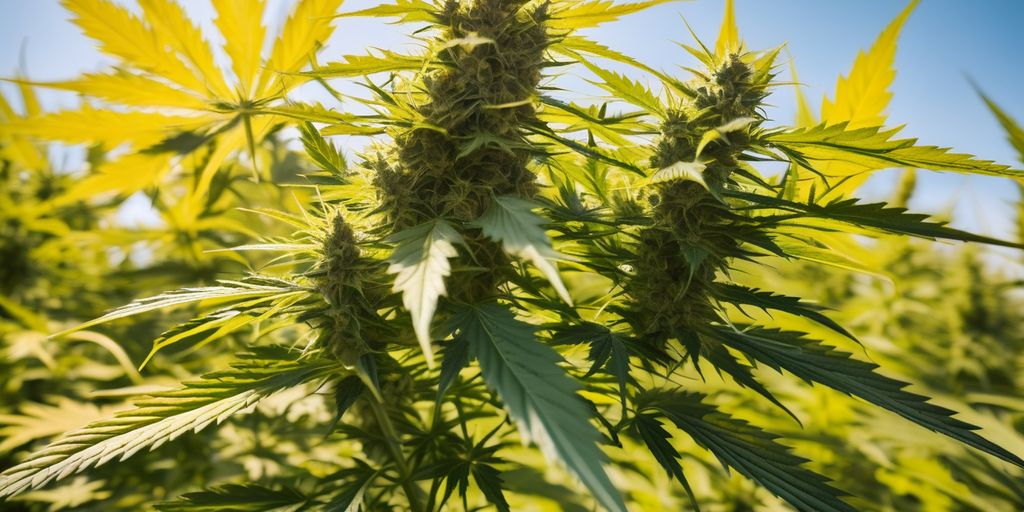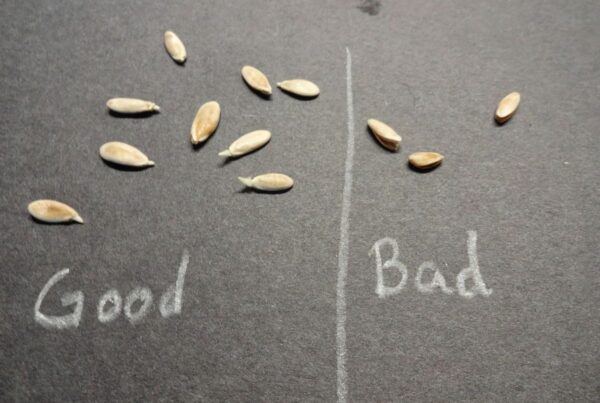Cannabis plants, like any living organism, require a balanced diet of nutrients to thrive. Nutrient deficiencies can severely impact their growth, yield, and overall health. Understanding the symptoms and remedies for these deficiencies is crucial for cultivating healthy cannabis plants. This article explores the various signs of nutrient deficiencies, their effects on cannabis, and how to address them effectively.
Key Takeaways
- Identifying nutrient deficiencies early is crucial for the health and yield of cannabis plants.
- Nitrogen, phosphorus, and potassium are primary nutrients that significantly impact cannabis growth and development.
- Trace elements like zinc, copper, and manganese, though required in smaller amounts, are vital for plant health.
- Symptoms such as chlorosis, leaf spotting, and curling can indicate specific nutrient deficiencies.
- Proper soil testing, nutrient balancing, and timely adjustments can prevent and remedy nutrient deficiencies.
Spotting the Signs: How to Tell Your Cannabis is Craving More Nutrients
Yellow Drama: Nitrogen Deficiency
When your cannabis starts throwing a yellow fit, it’s usually screaming for nitrogen. This is like the plant’s way of telling you, "Hey, I’m starving over here!" Keep an eye out for yellowing, especially on the older, lower leaves. It’s a classic sign that your green beauties need a nitrogen boost.
The Faint Hearted: Iron Deficiency
Iron deficiency turns your plants into the faint-hearted ones of the garden. If you notice the newer leaves turning yellow with green veins, it’s time to play doctor and give them an iron supplement. This symptom, known as chlorosis, can really put a damper on your crop’s performance.
Crunch Time: Calcium Needs
And when it’s crunch time, your plants will let you know they’re craving calcium by the way their new leaves look distorted or have dead spots. It’s like they’re saying, "Could I get a little more calcium over here?" This is crucial for strengthening the cell walls and overall health of your plants.
Remember, a happy plant is a productive plant. Keep these signs in mind, and you’ll be on your way to a bountiful harvest!
The Hungry Trio: Nitrogen, Phosphorus, and Potassium
Down here in southern Oklahoma, we like to keep things simple, but when it comes to our cannabis crops, we gotta talk about the big three: Nitrogen, Phosphorus, and Potassium. These are the heavy lifters of the nutrient world, and trust me, they’re as essential as barbecue sauce on ribs at a cookout.
The Green Machine: Nitrogen
Nitrogen is the lifeblood of our plants, folks. It’s all about that green! Without enough nitrogen, our plants would be as pale as a ghost and just about as lively. It’s crucial for photosynthesis and helps our plants grow tall and strong. If you see your leaves turning yellow, it might be time to ramp up the nitrogen.
The Bloom Booster: Phosphorus
Next up, we’ve got Phosphorus. This buddy helps transfer energy around the plant, making sure those roots are strong and the flowers are blooming like it’s springtime on the prairie. Low phosphorus? You’ll see slower growth and fewer blooms. Keep an eye on those lower leaves; they’ll tell you what’s up.
The Strength Trainer: Potassium
And let’s not forget about Potassium. This nutrient is like the plant’s personal trainer, helping regulate water and making sure everything’s moving where it should be. Signs of potassium deficiency include brown and yellow leaf tips and edges, and nobody wants that in their garden.
Remember, folks, too much of a good thing can lead to nutrient burn, so always keep it balanced!
Minor Elements, Major Impact: Trace Nutrients You Can’t Ignore
Alright folks, let’s dive into the world of those sneaky little elements that might not make the headlines but sure as heck make a difference in your cannabis crops. We’re talking about trace nutrients – those micronutrients that are like the secret sauce to a thriving grow. Just like you wouldn’t skip the seasoning on your barbecue, you shouldn’t overlook these nutrients in your soil!
Zinc: The Silent Supporter
Zinc might not be the loudest in the room, but it’s crucial for strong plant growth. Think of it as the quiet kid in class who always has the right answers. Zinc helps with hormone production and improves plant resilience. Missing out on zinc? Your plants might show stunted growth and funky leaf discoloration.
Copper: More Than Just Coins
Copper is more than just pocket change! This nutrient plays a big role in photosynthesis and overall plant health. Low copper can lead to pale leaves and weak stems. Keep an eye on those copper levels unless you want your plants looking like they’ve been on a diet!
Manganese: The Hidden Hero
Last but not least, manganese. This guy is a powerhouse in the enzyme system and aids in nitrogen absorption. Low manganese can lead to yellowing leaves and growth issues. It’s like having a superhero in your garden that’s always ready to save the day!
Remember, even though they’re called ‘trace’ nutrients, their impact is anything but minor. Keep these guys balanced and your cannabis will thank you with top-notch buds!
When Plants Speak: Understanding Cannabis Leaf Symptoms
Chlorosis Chronicles
Ever noticed your cannabis leaves turning a sickly yellow? That’s chlorosis for ya, and it’s a classic tell-tale sign that your plants are hankering for more nutrients. Keep an eye on those leaves, because they’re the gossip queens of the plant world, spilling the beans on what’s going down in the root zone.
Spotty Leaf Saga
Now, if you see spots popping up on your leaves like a teen’s acne breakout, don’t panic. It’s just your plants throwing a bit of a tantrum, needing some extra TLC. This could be a sign of multiple deficiencies, so it’s a bit of a detective game to figure out the exact issue.
Curling Leaves Conundrum
And then there’s the curling leaves—like they’re trying to roll themselves up and hide. This usually screams, ‘I need water or I’m getting too much of something!’ It’s crucial to strike a balance, because just like us after a big meal, plants can get pretty uncomfortable with too much on their plate.
Remember, the key to a thriving cannabis garden is not just feeding your plants, but understanding what they’re telling you through their leaves.
The Rescue Remedies: Fixing Nutrient Deficiencies
Soil Test First: Know What’s Missing
Before you start throwing nutrients at your plants willy-nilly, let’s get scientific about it. A good ol’ soil test will tell you exactly what’s missing and what’s in excess. It’s like a health check-up but for your soil!
Feed Me Right: Balancing Nutrients
Once you know what your plants are craving, it’s time to feed them right. Balancing nutrients isn’t just about dumping more food into the soil; it’s about giving your plants a well-rounded diet. Think of it as meal prepping for your green ladies!
Flush Out the Fuss: When Less is More
Sometimes, less is indeed more. If you’ve been a bit overzealous with the nutrients, a good flush might just be what the doctor ordered. Use pH-balanced water to flush out the excess and get those nutrient levels back to normal. It’s like a detox for your plants!
Beyond the Roots: How Nutrient Deficiencies Affect Yield and Quality
Stunted Growth Stories
Down here in southern Oklahoma, we know a thing or two about growing top-notch cannabis. But let me tell you, nothing hits harder than seeing your plants not reaching their full potential because they’re hungry for nutrients. Stunted growth isn’t just about shorter plants; it’s about the dreams of a bountiful harvest getting trimmed down too.
Bud Blues: When Flowers Suffer
Now, if your buds are looking more like sad popcorn than plump treasures, you might be dealing with nutrient deficiencies. It’s a real party pooper, especially when you’re aiming for those dense, aromatic beauties that customers love. Keep an eye on those feeding schedules, folks!
Potency Problems: Quality at Risk
And here’s the kicker: even if your plants look decent, a lack of nutrients can still mess with the potency. That’s right, your buds might not pack the punch you’re hoping for, making all your efforts feel a bit wasted. It’s crucial to balance those nutrients to ensure that every leaf and bud is as potent as it should be.
Remember, a well-fed cannabis plant is a happy cannabis plant. Keep those nutrients in check to avoid a disappointing harvest!
The Balancing Act: Preventing Nutrient Excess and Deficiency
Down here in southern Oklahoma, we know a thing or two about balance—whether it’s balancing on a rodeo bull or balancing nutrients in our cannabis crops. Getting that Goldilocks zone of ‘just right’ isn’t just a fairy tale; it’s crucial for avoiding the drama of nutrient lockout where too much of one good thing can cause a whole mess of problems.
The Goldilocks Zone: Not Too Much, Not Too Little
Imagine you’re mixing the perfect BBQ sauce. Too much vinegar? Your guests are puckering more than kissing. Same goes for your plants. Too much nitrogen? You might just lock out other essential nutrients, making your plants as unhappy as a bull with a sore tail. Keep it balanced, and you’ll have plants thriving like a well-tuned fiddle.
Reading the Signs: Plant Monitoring
Now, monitoring your plants is like checking the weather in Tornado Alley—necessary and a bit of an art. Look for signs like leaf discoloration or stunted growth. These are your plants’ way of waving a red flag and hollering for help. Catching these signs early can save you a heap of trouble down the line.
Adjusting on the Fly: Nutrient Management Tips
Adjusting your nutrient mix on the fly can feel like tuning a radio in a thunderstorm, but it’s possible. Start with a good soil test to know what you’re working with. Then, tweak your nutrients based on what your plants are telling you. Remember, each strain might as well be a different song, needing its own special tuning.
Wrapping It Up: A Symphony of Nutrients
Well, folks, we’ve danced through the leafy world of cannabis, tuning into the symphony of nutrients that keep our green friends grooving. Remember, each nutrient is like a musician in an orchestra; miss one, and the whole concert could be off-key! Keep your eyes peeled for those tell-tale signs of nutrient deficiency we chatted about. Whether it’s the yellowing of leaves or the stunted growth, each sign is your plant’s way of crying out for help. So, keep your nutrient game strong and your cannabis plants will be jamming happily all season long. Here’s to keeping your green beauties healthy, happy, and high-yielding!
Frequently Asked Questions
What are the common signs of nutrient deficiency in cannabis plants?
Common signs include yellowing leaves, stunted growth, leaf curling, and necrotic spots. Each nutrient deficiency has specific symptoms, such as chlorosis for iron deficiency or interveinal chlorosis for manganese deficiency.
How can nutrient deficiencies affect cannabis yield and quality?
Nutrient deficiencies can lead to stunted growth, reduced flower production, and decreased potency, potentially impacting the overall yield and quality of the cannabis harvest.
What are the most critical nutrients for cannabis health?
Nitrogen, phosphorus, potassium, calcium, magnesium, and iron are crucial for cannabis. Deficiencies in any of these can severely affect plant health and productivity.
How can I identify and treat nutrient deficiencies in cannabis?
Identify deficiencies by observing plant symptoms and confirm with a soil test. Treatment involves adjusting nutrient levels in the soil or hydroponic solution, ensuring balanced feeding and avoiding nutrient lockout.
What is the best way to prevent nutrient deficiencies in cannabis?
Regular monitoring of plant health, proper feeding schedules, and balanced nutrient solutions are essential. Soil tests can help adjust nutrient levels before deficiencies become apparent.
Can overfeeding cannabis plants cause problems?
Yes, overfeeding can lead to nutrient burn, characterized by tip burn on leaves and can further cause lockout, preventing plants from absorbing necessary nutrients, thus affecting growth and health.








